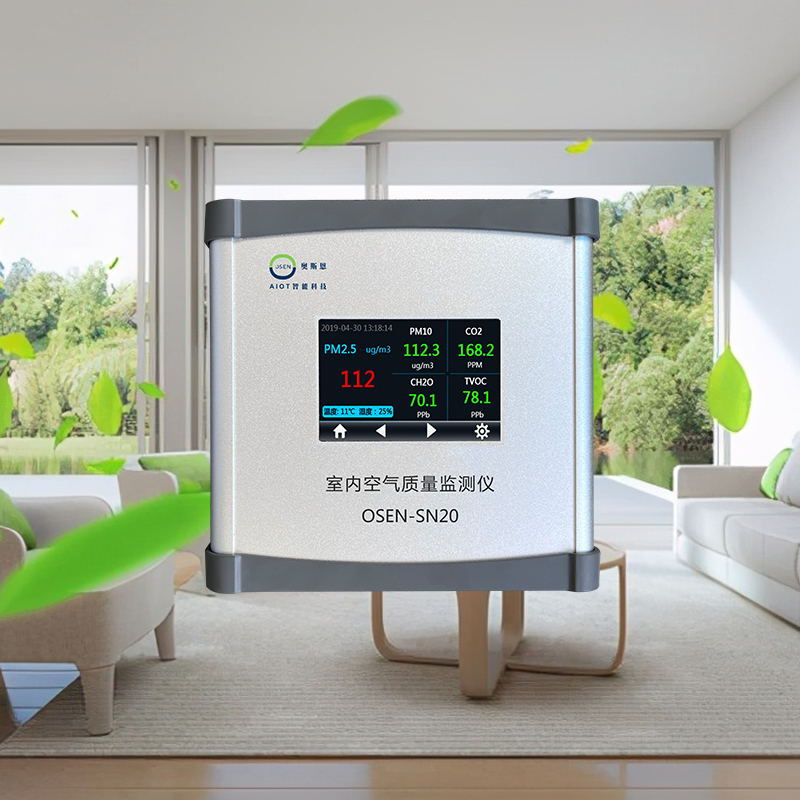The laboratory indoor environment monitoring system provides scientific data support for indoor air in the laboratory
2025-07-10 03:26:01
Background of using laboratory indoor environment monitoring system
As the core place for scientific research and testing, the stability of the indoor environment in the laboratory is directly related to the reliability of experimental results and personnel safety. With the refined development of experimental technology, the frequent use of various chemical reagents, and the continuous operation of precision instruments, harmful gases such as formaldehyde and VOCs are prone to accumulate inside the laboratory. At the same time, temperature and humidity fluctuations, microbial growth, and other issues may also interfere with experimental accuracy - for example, in a biological laboratory, excessive microbial communities in the air may lead to sample contamination; In the physical and chemical laboratory, abnormal humidity can affect the stability of reagents.
The traditional environmental management method that relies on manual timed recording and local sampling not only has limitations such as data lag and incomplete coverage, but also finds it difficult to cope with sudden environmental changes (such as gas concentration surges caused by ventilation system failures). In addition, regulations such as the "General Requirements for Laboratory Biosafety" continuously refine the control standards for experimental environments, making the demand for real-time monitoring and dynamic warning increasingly urgent. In this context, laboratory indoor environmental monitoring systems have emerged, providing data support for precise control and risk prediction of experimental environments through continuous perception and intelligent analysis of multidimensional environmental parameters. This not only ensures the scientific nature of scientific research work, but also builds a protective barrier for personnel health.

Product Introduction of Laboratory Indoor Environment Monitoring System
OSEN-SN20 Indoor Environmental Monitoring System
Basic parameters
Appearance design: The device supports both wall mounted and ceiling mounted installation methods, with a simple and atmospheric overall design that combines practicality and aesthetics.
Interface configuration: Equipped with RJ45 network port or 4G module (optional), RS485 interface, SD card slot, and relay to meet diverse connection needs.
Data transmission: Provide 4G wireless network, Ethernet (either option) WIFI、 Multiple transmission methods such as Bluetooth and serial port are used to adapt to data interaction in different scenarios.
Communication protocol: Compatible with HJ212 environmental communication protocol and Modbus industrial protocol, ensuring standardization and compatibility of data transmission.
Power supply specification: DC12V/2A DC power supply scheme is adopted to ensure stable operation of the equipment.
Display system: Equipped with a 3.2-inch LCD screen, it achieves data visualization presentation.
Monitoring indicators: Real time monitoring of temperature and humidity, PM1.0, PM2.5 and other particulate matter concentrations, as well as gas parameters such as carbon dioxide, carbon monoxide, formaldehyde, volatile organic compounds (VOCs).
Energy consumption characteristics: The device adopts a low-power design, with an operating power of only 2W, which is energy-saving and environmentally friendly.

Function Parameter
Network connection: The device has multiple networking capabilities and supports Ethernet, 4G full network IoT cards, WIFI and other access methods, which can flexibly adapt to different network needs in different scenarios.
Communication protocol: The standard supports MODBUS RTU protocol and HJ212-2017 protocol, while providing customized protocol services to meet differentiated data exchange needs.
Data display: Equipped with a real-time display screen, it automatically refreshes monitoring data every 2 seconds, synchronously presenting network signal strength and system time; Visual status identification is used, which displays green when the parameters are normal and automatically switches to a red warning when the threshold is triggered.
Data reading: Users can quickly read device data based on the standard MODBUS protocol through the serial port, ensuring the convenience and standardization of data acquisition.
Parameter configuration: Connect the device to the computer through a serial port and use a dedicated application to adjust the parameter alarm threshold WIFI、 Personalize settings for Bluetooth, Ethernet, MODBUS protocol, and HJ212 protocol server push addresses to achieve flexible configuration.
Linkage control: Equipped with a built-in relay module, it can intelligently link with external devices such as fans, automatically trigger device start and stop based on monitoring data, and achieve automation of environmental regulation.
Data storage: Supports local SD card expansion storage, compatible with a maximum capacity of 256GB, providing sufficient local storage space for monitoring data, facilitating data tracing and analysis.
Keyword:



